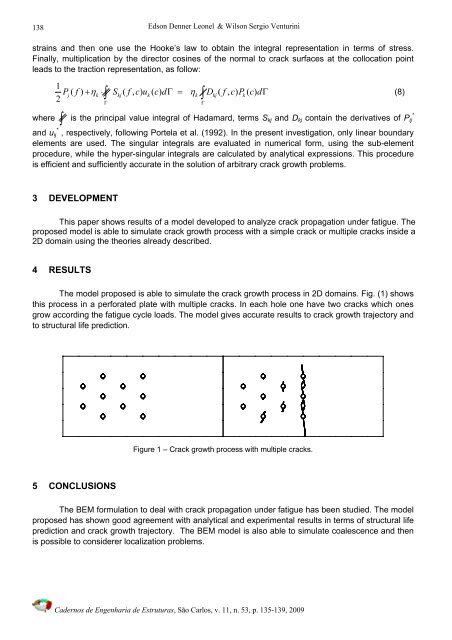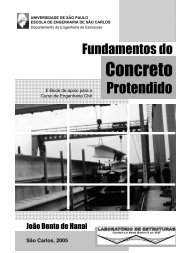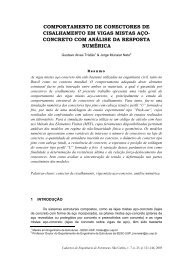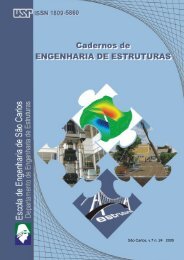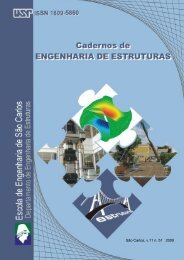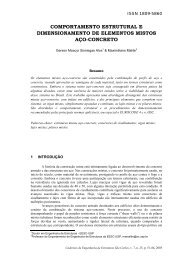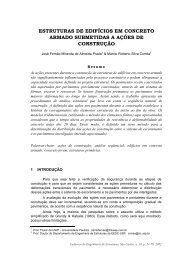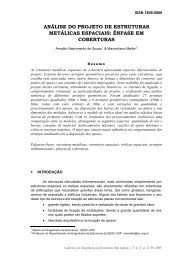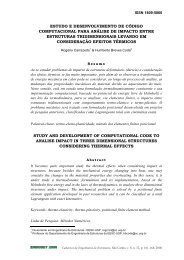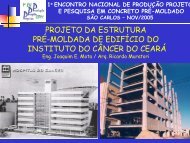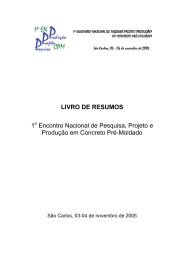download completo - SET - USP
download completo - SET - USP
download completo - SET - USP
Create successful ePaper yourself
Turn your PDF publications into a flip-book with our unique Google optimized e-Paper software.
138<br />
Edson Denner Leonel & Wilson Sergio Venturini<br />
strains and then one use the Hooke’s law to obtain the integral representation in terms of stress.<br />
Finally, multiplication by the director cosines of the normal to crack surfaces at the collocation point<br />
leads to the traction representation, as follow:<br />
1<br />
P ( f) + η ⋅ S ( f, c) u ( c) dΓ = η D ( f, c) P ( c)<br />
dΓ<br />
(8)<br />
∫<br />
2 j k kj k k kj k<br />
Γ Γ<br />
∫<br />
where ∫ is the principal value integral of Hadamard, terms S kj and D kj contain the derivatives of P ij<br />
*<br />
and u ij * , respectively, following Portela et al. (1992). In the present investigation, only linear boundary<br />
elements are used. The singular integrals are evaluated in numerical form, using the sub-element<br />
procedure, while the hyper-singular integrals are calculated by analytical expressions. This procedure<br />
is efficient and sufficiently accurate in the solution of arbitrary crack growth problems.<br />
3 DEVELOPMENT<br />
This paper shows results of a model developed to analyze crack propagation under fatigue. The<br />
proposed model is able to simulate crack growth process with a simple crack or multiple cracks inside a<br />
2D domain using the theories already described.<br />
4 RESULTS<br />
The model proposed is able to simulate the crack growth process in 2D domains. Fig. (1) shows<br />
this process in a perforated plate with multiple cracks. In each hole one have two cracks which ones<br />
grow according the fatigue cycle loads. The model gives accurate results to crack growth trajectory and<br />
to structural life prediction.<br />
Figure 1 – Crack growth process with multiple cracks.<br />
5 CONCLUSIONS<br />
The BEM formulation to deal with crack propagation under fatigue has been studied. The model<br />
proposed has shown good agreement with analytical and experimental results in terms of structural life<br />
prediction and crack growth trajectory. The BEM model is also able to simulate coalescence and then<br />
is possible to considerer localization problems.<br />
Cadernos de Engenharia de Estruturas, São Carlos, v. 11, n. 53, p. 135-139, 2009


